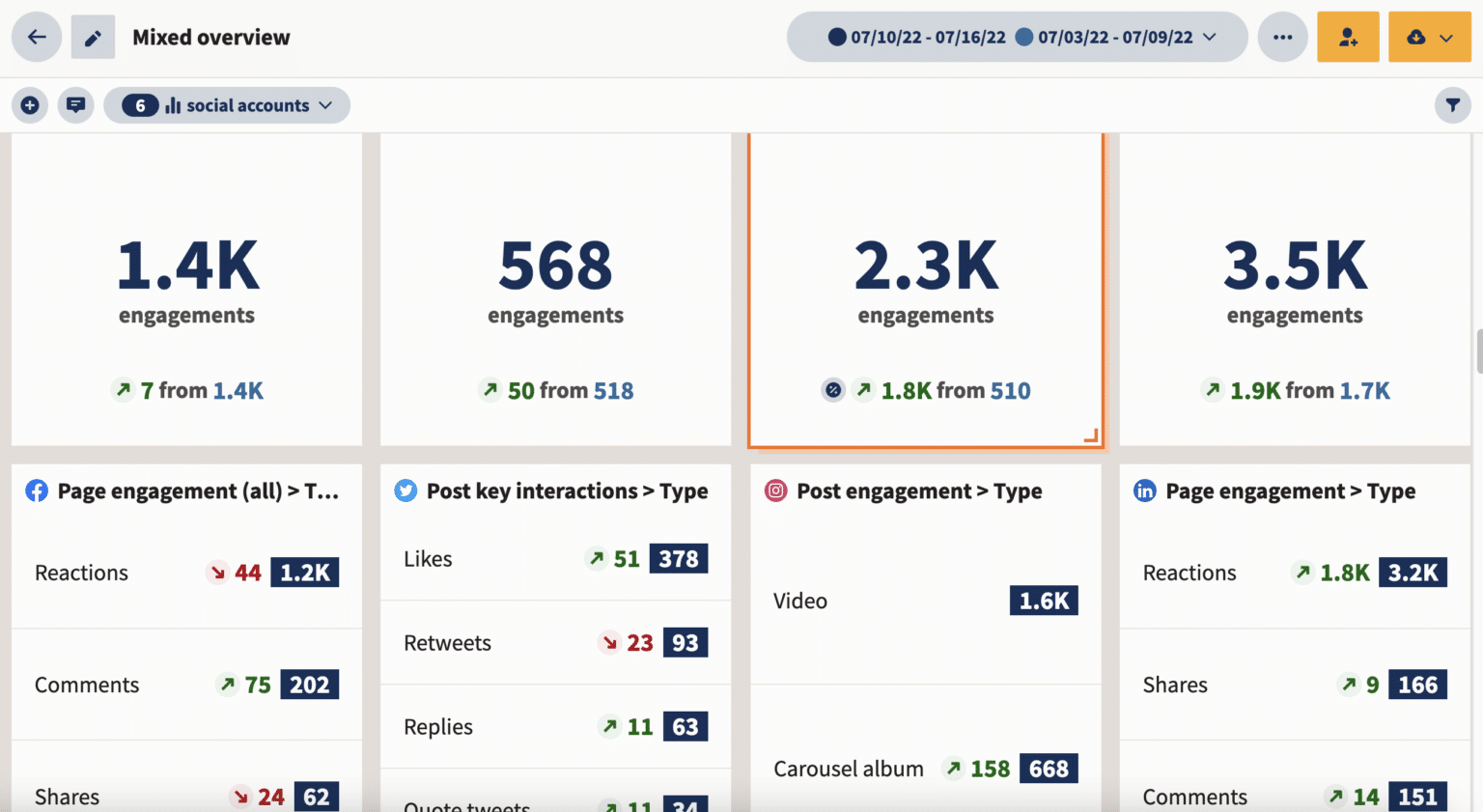Traditionally, social vanity metrics have been the shiny numbers that make your brand look good on the surface but don’t necessarily translate to business success. Think likes, followers, comments, and shares–AKA the metrics that boost a brand’s perceived status on social media.
The more followers and likes you have, the more popular you seem. But here’s the catch: these numbers can be easily gamed. You can buy followers, use bots, or employ click farms to inflate your metrics. In the early days of social influencer marketing, opportunistic influencers would leverage these inflated metrics for lucrative brand deals.
If that investment didn’t pan out in a return, brands were left scratching their heads. Trust waned and these vanity metrics became largely viewed as just that: a cheap way to appear important, cool, and relevant in the social landscape.
So, are these metrics just a facade rather than a true indicator of success?
It’s easy to write these metrics off in favor of stats that are more representative of business performance metrics, like customer acquisition costs (CAC) or return on investment (ROI). But there’s a re-emerging value in vanity metrics: seeking higher rates of engagements including likes, comments, and followers can help you build a loyal community of potential customers and might even convert to business success in the longer term.
How can vanity metrics help support your strategy?
As bots and fraud proliferate across the digital landscape, marketers and users alike have a growing awareness of how vanity metrics can be manipulated. This has led to a shift in focus towards more “meaningful” engagement metrics like engagement rates, which can provide a clearer picture of genuine interaction.

Source: Hootsuite
High engagement rates can be useful for brands since they’re often prioritized by algorithms, making your content more discoverable. But how is the engagement rate calculated? By using the same vanity metrics–shares, likes, comments, and other interactions–that marketers have shied away from. Recently, Adam Mosseri opened up about all the ways the Instagram ranking algorithm works, confirming that these signals are extremely important for content discovery and ranking.
Your vanity metrics can be a great indicator of what content resonates with your audience and can help inform your strategy overall. A leading beauty brand found that leveraging educational content that performed well organically as creative for paid follower campaigns on Instagram not only increased engagement and total net follower count but also became a predictor of revenue growth, leading to an increase in sales across Amazon and retail channels.
By leaning into educational content that builds authentic engagement, they could get real-time feedback on their products and take these learnings to amplify top-performing content in their paid campaigns. This process creates a feedback loop, driving direct business outcomes.
The challenges of community-building
These metrics can be a great way to gauge your audience’s interest and interact with your community online. But with great power comes great responsibility (as marketing Spider-man might say). That’s even more true with vanity metrics; it’s easy to get swept up in the wrong stats and lose sight of what these numbers are really useful for.
One of the main challenges with using vanity metrics in a modern, useful way is that they require a robust content engine. If you’re not consistently producing high-quality content that resonates, it’s hard to leverage any of these metrics meaningfully.
You also need to keep in mind that engagement is a two-way street. You’ll need a well-defined strategy to navigate any potential pitfalls and keep the conversation going with your online audience, and that kind of community management can be resource-intensive.
There’s an inherent risk when it comes to engaging with your community. You can’t always control all conversations, and sometimes comments can veer off course. To protect your brand safety, your team should be careful to consider possible outcomes and responses before posting or commenting and only join in on conversations that are relevant, helpful, and add value to your brand or business.
This doesn’t mean ignoring critical comments or questions that pop up (in fact, you should lean in and offer perspective). But you should avoid wasting time on trolling comments.
These challenges can be daunting, but the opportunities are likely to be worth the risk for your brand. By reintroducing vanity metrics as real indicators of success, you can begin to explore new content frameworks and storytelling formats. Ask yourself: what does your audience want to see? Are they looking to you for educational content or something more aesthetically pleasing? What will get them to engage?
The key is to experiment and take calculated risks to create more value for your community. This feedback loop can inform your entire business strategy, making it more responsive and community-focused.
Making the most of vanity metrics in your social media strategy
Although we’ve recently seen some social platforms toying with the idea of bucking the traditional “like” to distance themselves from some of the negative connotations surrounding social media (think fake news, manipulative algorithms, the teen mental health crisis) and become “unsocial” networks, the truth is that vanity metrics aren’t going anywhere anytime soon. These indicators have always been an integral part of social media success, and they remain relevant even as platforms and marketing strategies evolve.
If you want to get the most out of your social strategy, you need to take these metrics seriously and use them to your advantage. By centering your content around community engagement and integrating social media strategies into your overall business plans, you can build an engaged, loyal audience and future-proof your organization as platforms change and media uses continue to converge, like how consumers are increasingly using social media as search.
If you’re ready to unlock the full potential of these metrics in your strategy, start by:
- Establishing a baseline: Analyze your current content and engagement metrics to create a baseline. By keeping an eye on those standard numbers, you can understand whether your metrics are accurate or if they’ve been compromised via bots.
- Experimenting with content: Try new angles and hooks and track how your audience responds to see what content you should continue making and what you should avoid.
- Partnering with creators: Collaborate with creators to amplify your content outside of your own audience and to breathe new life into your feed.
- Amplifying content with paid campaigns: Use successful organic content in paid campaigns to get the most out of your work.
- Focusing on tracking and analysis: Finally, monitor sales and engagement metrics to measure impact and prove the value of these vanity metrics for your business’s bottom line.
Once you’ve implemented these strategies, you can leverage those social media metrics to make the most of your team’s hard work on your organic social and translate that effort into real business outcomes.







Responses